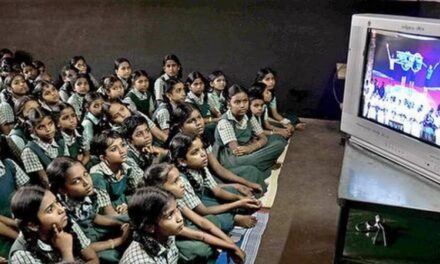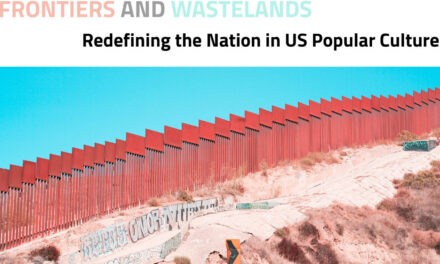CfP URL: https://tmgonline.nl/announcement/#cfpmhen
Contemporary research predominantly conceives of ‘new media’—i.e., media worthy of scholarly attention—as digital media and computer technologies (Peters, 2009; Borah, 2017). Media historical scholarship has responded to this in various ways. Media archaeologists, for example, argue that historicising media helps to counter teleological perspectives concerning the current digital media landscape, as well as the corporate-fed idea that present-day media are more disruptive and transformative than ever. Others seek to historicise the current media ecosystem and its conceptual underpinnings to investigate claims of their supposed “newness” (Balbi, Ribeiro, Schafer & Schwarzenegger 2021). Media history at large has thus shifted from a central focus on traditional mass media towards a more diverse set of research ambitions, also including transnational media histories.
However, media and technologies that emerged or prospered over the course of the 1980s and 1990s have largely been neglected, some exceptions notwithstanding (e.g., Arceneaux 2005; Moe & Van den Bulck 2016; Slootweg 2018; Verhoef 2022). This is problematic, for it results in a gap in our socio-cultural knowledge. After all, scholars have abundantly made clear that media histories form an apt prism through which to analyse ‘a rich web of cultural practices and ideas’ (Douglas 1987: xv). Seminal works have highlighted the societal changes that older media technologies, such as the telegraph (Czitrom 1982), telephone (Fischer 1992), radio (Douglas 1987) and television (Spigel 1992) engendered and reflected—yet there is a dearth of similar histories pertaining to the 1980s and 1990s. An earlier special issue of TMG—Journal for Media History sought to bring electromagnetic media such as video back into the limelight. More needs to be done, however. We believe that encouraging 1980s and 1990s media histories is imperative to understand historical developments such as burgeoning individualisation, consumerism or neoliberalism—developments which continue to affect our lives today. In short, 1980s and 1990s media technologies moved fast and broke things, too.
This special issue of TMG—Journal for Media History aims to give media historical research into the 1980s and 1990s a new impetus. Which sources can be used and on what empirical grounds can we construct histories of those media that have fallen through the cracks of traditional and current media historical inquiry? We welcome a variety of disciplines and approaches to make a head start in realising our ambition to present these histories. Contributions can, for instance, focus on well- and lesser-known media technologies such as the Walkman, videodisc, CD-I, Datasette, Teletext, pager/beeper, cell phone, Discman, various home computer systems or video game consoles (e.g., the NES). Media that underperformed in one market, but flourished in others, also qualify. Relevant topics and themes for this special issue might include, but are not limited to:
- media histories as a lens to reflect on wider socio-cultural developments, to ‘chart the desires and concerns of a given social context and the preoccupations of particular moments in history’ (Sturken & Thomas 2004: 1).
- the social construction of media and technologies, including popular consciousness, discourses and imaginaries and the ways in which such media were advertised.
- media archaeological investigations of forgotten and neglected media technologies from the 1980s and 1990s
- various legacy media from the 1980s and 1990s that are important to understand their purported convergence during the current digital media landscapes (cf. Balbi 2015)
- the exhibition of media. Consumer electronics exhibitions and trade events such as Firato (Amsterdam) and Electronic Entertainment Expo (E3) were crucial cultural intermediaries in the dissemination of media and technology.
- other intermediaries that helped promote and adopt media, such as designers (e.g. du Gay et al. 2017) and sites where users, consumers and/or producers convened, such as hobby clubs (e.g. Veraart 2011).
Since the majority of media histories tend to focus on the English-speaking world, we also welcome contributions that focus on other countries or regions around the globe.
Submission guidelines
Contributions should be in English. Abstracts should present the main research question(s), scientific literature, method, and case study the authors plan to use. They should not exceed 500 words. Please submit your abstract via e-mail to 80sand90smediahistories@gmail.com. Abstract submissions are due on May 16 2022.
Manuscripts: 6,000-8,000 words (including notes). Deviations are possible, subject to the agreement of the editors. Authors are to submit original papers that are not under consideration for publication elsewhere.
Final acceptance depends on a double-blind peer review process of the manuscripts. The expected publishing date of this special issue of TMG—Journal for Media History is in autumn 2023.
Contributions that receive positive reviews but are not accepted for the special issue may be considered for publication in another issue of TMG—Journal for Media History.
If you have questions, please reach the editors, dr. Jesper Verhoef (Utrecht University) and dr. Tom Slootweg (University of Groningen), via 80sand90smediahistories@gmail.com.
Key dates:
Abstract submission deadline: May 16 2022
Authors receive confirmation of selection of papers: June 7 2022
Full paper submission deadline: November 16 2022
References
Arceneaux, Noah. 2005. “The World Is a Phone Booth: The American Response to Mobile Phones, 1981-2000.” Convergence 11 (2): 22–31.
Balbi, Gabriele. 2015. “Old and New Media. Theorizing Their Relationships in Media Historiography.” In Theorien des Medienwandels, edited by Susanne Kinnebrock, Christian Schwarzenegger, and Thomas Birkner, 231–49. Köln: Herbert von Halem Verlag.
Balbi, Gabriele, Nelson Ribeiro, Valérie Schafer & Christian Schwarzenegger, eds. 2021. Digital Roots:
Historicizing Media and Communication Concepts of the Digital Age. Oldenburg: De Gruyter.
Borah, Porismita. 2017. “Emerging Communication Technology Research: Theoretical and Methodological Variables in the Last 16 Years and Future Directions.” New Media & Society 19 (4): 616–36.
Czitrom, Daniel. 1982. Media and the American Mind: From Morse to McLuhan. Chapel Hill: University of North Carolina Press.
Douglas, Susan J. 1987. Inventing American Broadcasting, 1899-1922. Baltimore, MD: The Johns Hopkins University Press.
Fischer, Claude S. 1992. America Calling: A Social History of the Telephone to 1940. Berkeley, CA: University of California Press.
Gay, Paul du, Stuart Hall, and Linda Janes. 1997. Doing Cultural Studies. The Story of the Sony Walkman. London: Sage.
Moe, Hallvard, and Hilde Van Den Bulck, eds. 2016. Teletext in Europe: From the Analog to the Digital Era. Göteborg: Nordicom.
Peters, Benjamin. 2009. “And Lead Us Not into Thinking the New Is New: A Bibliographic Case for New Media History.” New Media & Society 11 (1–2): 13–30.
Slootweg, Tom. 2018. “Resistance, Disruption and Belonging: Electronic Video in Three Amateur Modes.” PhD diss., Groningen: University of Groningen.
Sturken, Marita, and Douglas Thomas. 2004. “Introduction: Technological Visions and the Rhetoric of the New.” In Technological Visions: Hopes And Fears That Shape New Technologies, edited by Marita Sturken, Douglas Thomas, and Sandra J. Ball-Rokeach, 1–18. Philadelphia, PA: Temple University Press.
Veraart, Frank. 2011. “Losing Meanings: Computer Games in Dutch Domestic Use, 1975–2000.” IEEE Annals of the History of Computing 33 (1): 52–65.
Verhoef, Jesper. 2022. “The Epitome of Reprehensible Individualism: The Dutch Response to the Walkman, 1980-1995.” Convergence – Forthcoming.






